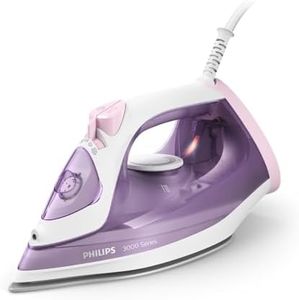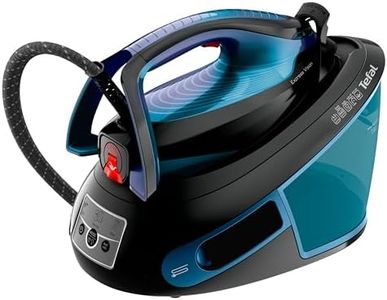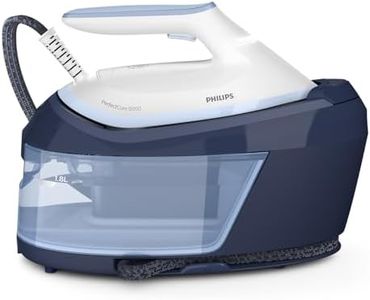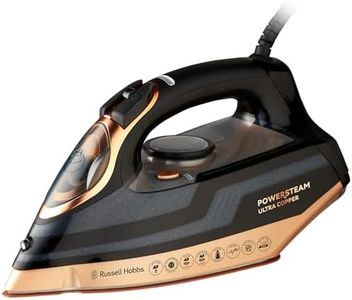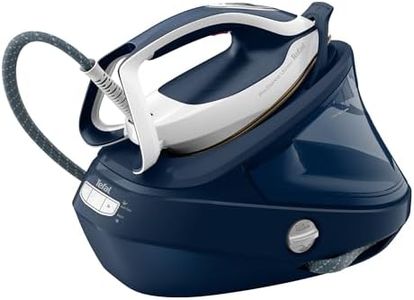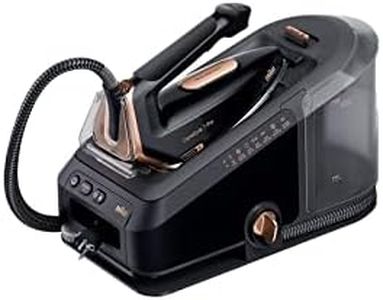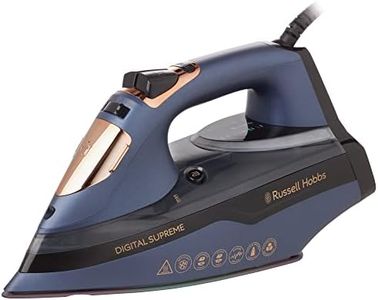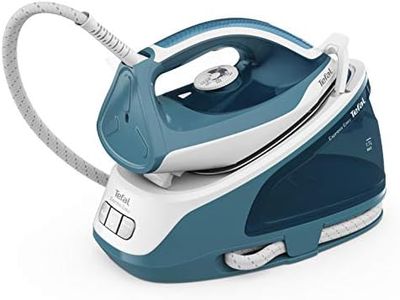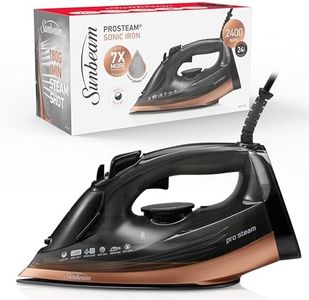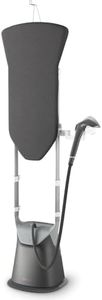We Use CookiesWe use cookies to enhance the security, performance,
functionality and for analytical and promotional activities. By continuing to browse this site you
are agreeing to our privacy policy
10 Best Iron Steam Stations
From leading brands and best sellers available on the web.Buying Guide for the Best Iron Steam Stations
Choosing the right steam station iron can make your ironing tasks much quicker and more effective, especially if you deal with high volumes of laundry or tougher fabrics. Steam station irons differ from standard irons mainly by separating the water tank and delivering more continuous steam, making them suitable for both heavy-duty and occasional home use. To pick the best fit, it’s important to understand the main features that affect performance, ease of use, and maintenance.Steam Output (g/min)This refers to how much steam the iron can produce per minute, measured in grams. Higher steam output allows for better penetration through fabrics, making it easier to remove stubborn wrinkles. Typical ranges are from around 90g/min for lighter use to over 120g/min for heavy-duty results. If you mostly iron delicate fabrics or have few items, a lower steam output will suffice, but for bigger loads or thick fabrics, look for a higher output.
Steam Pressure (bar)Steam pressure, measured in bars, determines how deeply the steam can penetrate fabric. Low pressure (up to 4 bar) is adequate for basic tasks and thinner fabrics. Mid-range pressure (4-6 bar) is suitable for most household needs, handling thicker garments with ease. High pressure (6 bar or more) is ideal if you handle large piles of laundry or use the iron for tougher materials like linen or denim. Consider the type and amount of ironing you do to choose the right level.
Water Tank CapacityThe water tank size controls how long you can iron without stopping to refill. Smaller tanks (around 1L) are lighter to move but require more frequent refills, making them a good fit for occasional use or small households. Larger tanks (1.5L or more) are great when you do a lot of ironing in one session because they allow uninterrupted use, but they make the unit bigger and heavier. Think about your typical ironing session—longer or shorter—and pick accordingly.
Heating TimeHeating time is how quickly the steam station iron becomes ready to use after you turn it on. Some machines are ready in under a minute, while others may take several minutes. Quick heating helps a lot if you're in a hurry or tend to do small, frequent ironing tasks. For longer sessions where the iron stays on, heating time is less critical. Consider your patience and lifestyle when evaluating this spec.
Soleplate MaterialThe soleplate is the flat metal part that glides over your clothes. Materials like stainless steel are durable and smooth, ceramic soleplates offer even heat and a non-stick surface, and some have special coatings for extra glide. If you iron different types of fabrics, a soleplate that heats evenly and resists scratching is important. For extra durability or if you want an easier cleaning experience, look at premium coatings.
Anti-Scale SystemBecause steam stations use water, they can build up limescale, especially if your water is hard. An anti-scale system helps prevent this, making the iron last longer and work better. Some models have removable collectors or alerts that remind you to clean the system. If you want hassle-free maintenance or live in an area with hard water, prioritize a good anti-scale feature.
Weight and ErgonomicsThis refers to how heavy the iron feels in your hand and how comfortable it is to use. Thanks to the separate base, steam station irons are often lighter than traditional irons in the hand, but the base itself can be bulky. If you have mobility concerns or do a lot of ironing in one session, check that the iron is comfortable to hold and easy to move. Good cord length and storage features can also make a big difference.
Vertical SteamingThis feature allows you to use the iron to steam hanging garments, curtains, or even upholstery, without needing an ironing board. If you often need to refresh clothes or want versatility beyond flat ironing, choose a model with reliable vertical steaming performance.

